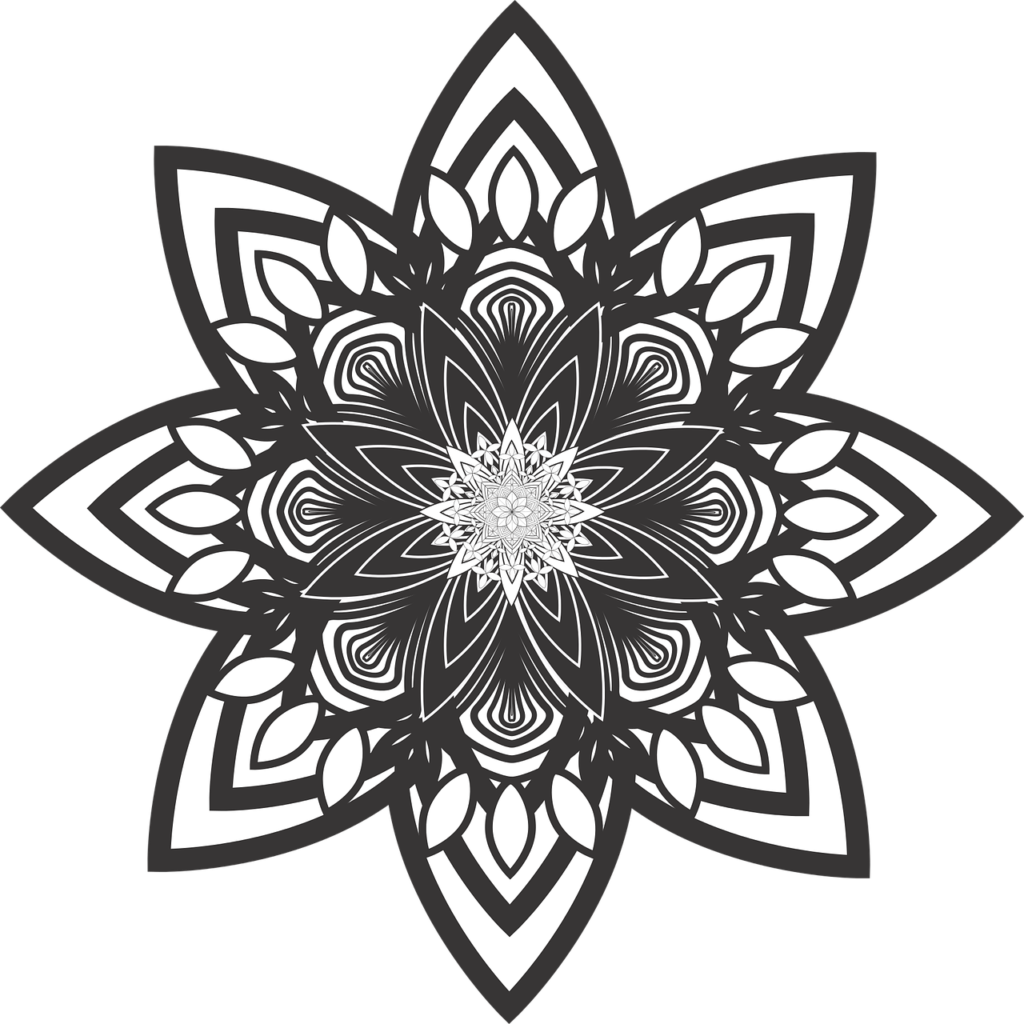
Bhuta Shuddhi is a profound practice deeply rooted in the ancient traditions of yoga and spirituality. This article delves into the significance, and practice of the cleansing of the elements, exploring its many benefits and relevance in modern life. Bhuta Shuddhi translates to “purification of the elements.” It is a yogic practice that aims to cleanse and balance the five fundamental elements within the human body – Earth, Water, Fire, Air, and Ether.
Bhuta Shuddhi finds its origins in ancient Indian scriptures and yogic texts. It has been practiced for centuries as a means to attain spiritual awakening and physical well-being. The practice of cleansing the elements is significant as it aligns the individual with the cosmic elements. It is believed that when the elements within the body are in harmony, one experiences physical health, mental clarity, and spiritual growth. The cleansing involves various rituals, visualizations, and meditative techniques. It is typically performed under the guidance of a knowledgeable practitioner or guru.
Benefits of Bhuta Shuddhi
Bhuta Shuddhi, the practice of purifying and balancing the five elements within the body and mind, is believed to offer several benefits in various aspects of one’s life, including physical, mental, emotional, and spiritual well-being. Here are some of the potential benefits of Bhuta Shuddhi:
- Physical Health: Balancing the elements can have a positive impact on physical health. For example, by purifying the Earth element (Prithvi), one may experience improved stability and strength. Balancing the Water element (Jala) can help maintain proper hydration and fluid balance, while purifying Fire (Agni) can support better digestion and metabolism. Air (Vayu) balance can improve respiration, and Ether (Akasha) balance can contribute to a sense of spaciousness and clarity.
- Mental Clarity: Bhuta Shuddhi practices can help calm the mind, reduce mental clutter, and enhance mental clarity. A balanced and purified mind is better equipped to make decisions and solve problems.
- Emotional Balance: By addressing imbalances in the elements, one can achieve emotional stability. For example, purifying the Water element (Jala) can help in managing emotions, reducing mood swings, and achieving a sense of calm. The purification of Fire (Agni) may assist in managing anger and frustration.
- Stress Reduction: Regular Bhuta Shuddhi practice can help reduce stress and anxiety by promoting relaxation and inner balance.
- Chakra Balancing: Bhuta Shuddhi is closely linked to the chakra system, and balancing the elements can also contribute to chakra alignment. Balanced chakras are believed to enhance overall well-being.
- Detoxification: By purifying and balancing the elements, Bhuta Shuddhi can be seen as a form of internal detoxification, eliminating impurities and toxins from the body and mind.
- Karmic Purification: Some practitioners believe that Bhuta Shuddhi can help purify past karmas and facilitate spiritual growth.
Types of Bhuta Shuddhi
Bhuta Shuddhi is a profound and ancient practice rooted in Indian yogic and spiritual traditions, offering a unique approach to harmonizing the fundamental elements that constitute the material world. This practice encompasses Earth, Water, Fire, Air, and Ether—each representing distinct qualities and attributes within the human experience. There are many guided visualizations, mantras, and techniques that one can immerse oneself in while exploring Bhuta Shuddhi. However, they are not advisable to be performed without the supervision of an experienced Guru. Below are the 5 major elements and with each, a specific form of Bhuta Shuddhi that can be practiced is also given.
Agni (Fire)

Agni is associated with transformation, digestion, metabolism, and the ability to assimilate both physical and mental experiences. The practice of Agni Bhuta Shuddhi is used in various yoga and spiritual traditions to cleanse and harmonize this element within the body and mind.
A simple ritual that can be accomodated in our lives for a rudimentary level of Agni Bhuta Shuddhi, is lighting an oil lamp in the room wherever we sleep. In addition, being in front of the lamp for 3 minutes with open hands and eyes, and then facing it backwards with the spine exposed can work wonders as well.
Jal (Water)

Cleansing of the water element has far reaching impacts throughout our body as 72% of our body is composed of water. Jal is associated with emotions, adaptability, fluidity, and the ability to go with the flow of life. Balancing the Water element is believed to help you navigate life’s emotional challenges more effectively and with greater serenity.
A simple cold water shower or bath is seen as a rudimentary form of Bhuta Shuddhi. Along with the dirt particles, the cold water removes off entanglements at a more basic level, making us calmer. If one wants to cleanse the water element more intensely, use of a copper utensil to store the water is advised. Drinking water that has been stored in a copper vessel for about 8-16 hours is reccomended for Jal Bhuta Siddhi.
Prithvi (Earth)

The earth element, is the one which closely roots us in our physicality. It is also the one that people seem to be losing sense of at a rapid pace. The benefits of Prithvi Bhuta Shuddhi may include increased stability, strength, and a greater sense of groundedness. A balanced Earth element is believed to help you navigate life with a solid foundation and remain steady in the face of challenges.
A simple exercise of walking bare foot in parks, planting a sapling, or hugging a tree can help in cleansing of the earth element. A mud bath is an option that is getting popular nowadays. Apart from this, developing a sense of gratitude while we consume it (food is made up of the earth element) also helps.
Vayu (Air)

Air is the most dynamic element, the one which keeps undergoing different transactions between ourselves and the outside world. The benefits of Vayu Bhuta Shuddhi may include enhanced respiratory function, a sense of lightness, improved mental clarity, and reduced restlessness. A balanced Air element is believed to help you navigate life with a feeling of buoyancy and openness.
Pranayama such as Kapal Bhati and Anulom Vilom can help in the cleansing of the air element. Taking a walk in areas having pure, unpolluted air can be very beneficial. Areas such as parks and lakes are popular for connecting with nature. In addition, one practice that can be done is to be aware of every single breath that you take. Not just intellectually thinking about the breath, but to be aware of it no matter in what situation you may be.
Akash (Space)

Akash is most subtle element of our body. Akasha is believed to serve as the canvas upon which the other elements operate. It provides the space in which all matter and energy exist. It is the element that connects the material and spiritual realms. There is not much knowledge about the cleansing of the Akash element that is available to the common people.
Akasha Bhuta Shuddhi, and every other advanced technique of Bhuta Shuddhi (of the previous elements as well) should be performed under the guidance of an experienced Guru. However, a simple technique that slowly works for the cleansing of the space element can be done without supervision. The technique is to look at the sun throughout the day 4 times. 15 minutes before sunrise, 15 minutes after sunrise, 15 minutes before the sunset, and 15 minutes afterwards. Whenever you look at the sun, close your eyes, and holding the namaskar posture, just be grateful to the space that is keeping the universe intact, and bow down to it.
Conclusion
Bhuta Shuddhi is a testament to the interconnectedness of the human experience with the natural world and the metaphysical dimensions of existence. It underscores the idea that aligning oneself with the elemental forces can lead to inner equilibrium, heightened self-awareness, and a profound sense of interconnectedness with the universe.
By engaging in Bhuta Shuddhi, individuals seek to purify and balance these elements within themselves, thereby promoting physical health, emotional well-being, mental clarity, and spiritual growth. The practice involves visualization, breath control, mantras, and other techniques that connect practitioners to the essence of each element, allowing them to release impurities, toxins, and emotional burdens.
However, it is essential to approach Bhuta Shuddhi with respect, patience, and guidance from knowledgeable teachers or gurus, as the practice can be intricate and esoteric. Nevertheless, for those who embark on this transformative journey, Bhuta Shuddhi can be a powerful tool for fostering holistic well-being and spiritual evolution, ultimately bringing one closer to the realization of their true self and the interconnectedness of all existence.
FAQs (Frequently Asked Questions)
- Is Bhuta Shuddhi a religious practice?
- Bhuta Shuddhi is a spiritual practice but not tied to any particular religion.
- Can anyone practice Bhuta Shuddhi?
- Yes, anyone can practice Bhuta Shuddhi, but it’s advisable to seek guidance from an experienced practitioner.
- How long does it take to see the benefits of Bhuta Shuddhi?
- The timeline varies from person to person, but many report experiencing benefits relatively quickly.
- Is Bhuta Shuddhi a form of meditation?
- While it involves meditative elements, Bhuta Shuddhi is a distinct practice focused on elemental purification.
- Are there any side effects of Bhuta Shuddhi?
- When practiced correctly, Bhuta Shuddhi is generally safe, but it’s essential to follow guidelines and listen to your body.
